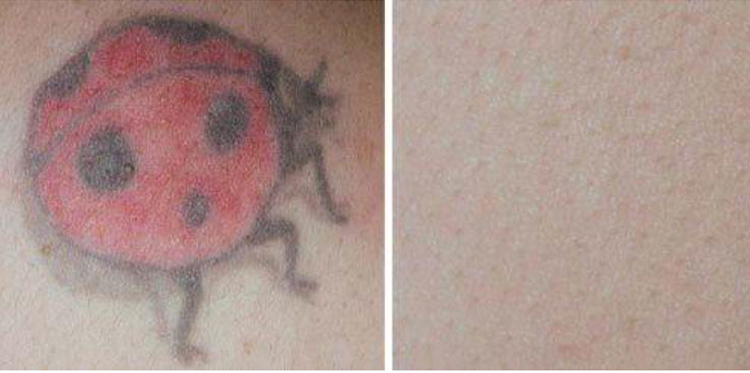There is a better solution for removing tattoos
The QX Max Laser System has revolutionized tattoo removal. Q-switched lasers emit wavelengths of light that are highly attracted to the tattoo ink in skin, leaving the surrounding (normal) skin in tact. This results in reduced side effects and much less pain. The QX MAX laser offers five wavelengths in one system. Each specific wavelength is attracted to different tattoo colors. With five wavelengths to choose from, this technology maximizes the chance of removal for all tattoo colors on all skin types, something considered nearly impossible in the past.
[switch_tattoo]
How many treatments will I need?
Several treatments are required for most tattoo removals. There are many factors that will determine how many treatments you need. For complete removal, professional tattoos require between 8-15 sessions, while amateur tattoos usually require approximately 1-5 sessions. This can vary – some require more treatment, some require less due to how much ink was used, type of ink used, depth of tattoo and if the ink color was mixed. To fade a tattoo (e.g. the goal is tattoo over with a new design), typically only a couple of sessions are required.
Understanding tattoo removal
The QX MAX laser transmits extremely short energy pulses that cause tattoo pigments to break into smaller particles that are then removed by the bodies’ own immune system. The Q-Switched laser technology generates single nanosecond pulses, which are more efficient at removing pigment than any other system on the market. Single pulses are not affected by the optical shielding phenomenon arising from pigment destruction. Simply put, ink and pigment can be reached and removed from a deeper level, and laser treatment efficiency in a single session are significantly greater.
Can tattoo removal be performed on any skin type?
Tattoos can be removed from all skin types. However the darker the skin, the less contrast there is between the color of the skin and the tattoo, making it more difficult to remove with-out affecting the normal skin.

